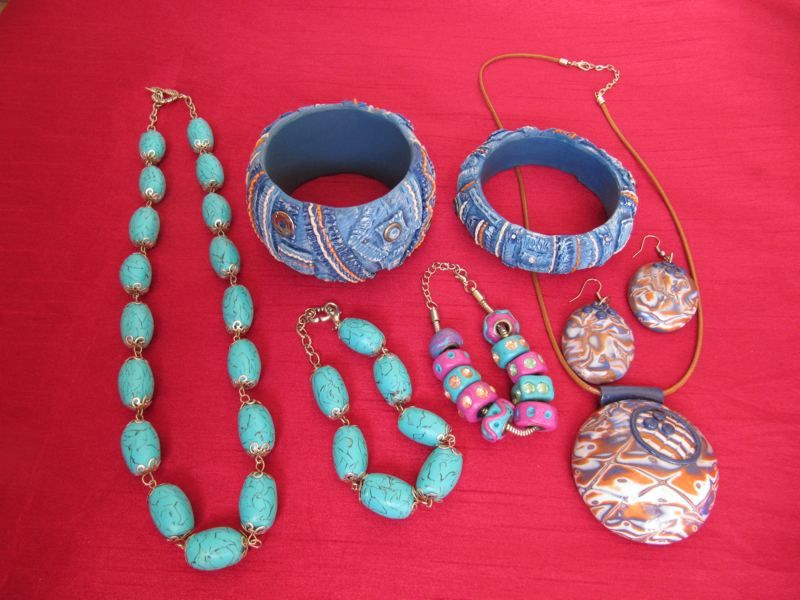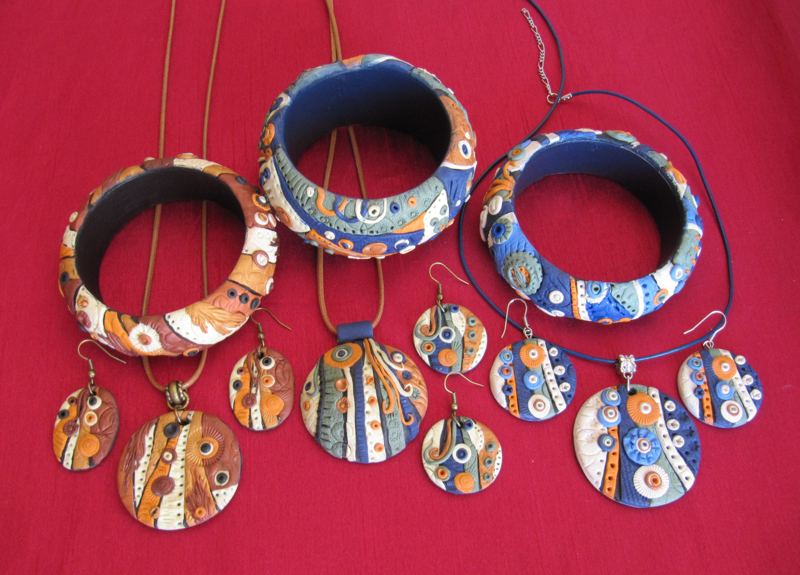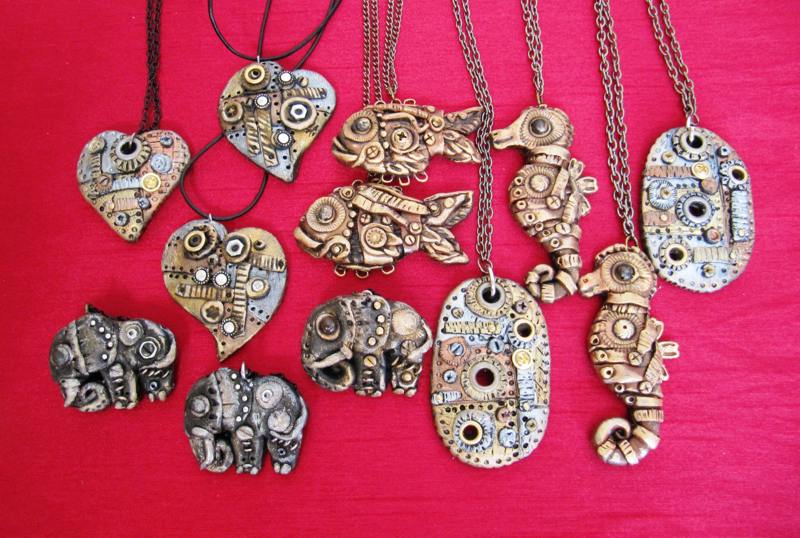Polymer clay is an amazing material.
Polymer clay (plastic, thermoplastic, thermoplastic or plastic) is a plastic material for sculpting small items and modeling, harden in air or when heated (depending on the type of plastic). To give it plasticity, plasticizers are used, which completely absorbed into the base material when heated from 100 to 130 ° C. As a result, the material loses its plasticity and ability to change shape.
After processing, polymer clay becomes very hard and resembles plastic. It can be drilled, sawed, sanded, painted, rolled, It is used to create art compositions, souvenirs, bijouterie, stationery, children's toys. wear, play with and store for a long time.

Plastic sculpting is becoming an entertaining hobby and even a professional activity. Homemade decorations, cartoon characters and souvenirs made of polymer clay are in demand on the market.
Polymer clay is a magical material that allows you to create unusual, fantastic jewelry with your own hands at home. The mass is plastic, has a huge palette of colors, retains its shape well, may not bake for a long time and at the same time not lose its properties, which allows you to work on the product for a long time. The properties of plastic make it possible to do very delicate and elegant things. It is affordable the opportunity to do what is impossible to buy, to do whatever comes into your head - any shapes, colors, patterns, textures.
We invite you to see our souvenirs from Portugal, which we create from polymer clay of the FIMO (STAEDTLER) brand of the German company Eberhard Faber.



A bit of history.
In 1907, Belgian chemist Leo Bakeland patented a polymer plastic called Bakelite. Very pliable material does not melt under the influence of high temperature, it did not dissolve in acidic and alkaline environments. It has found application in the production of aircraft parts, mechanical engineering, household appliances, tableware and design projects.
In the thirties of the last century, plastic fell into the hands of Katie Cruz, who was engaged in the manufacture of dolls. Sophie Rebinder continued her mother's work and, constantly improving the quality of polymer clay, she created her own brand in 1954 - FIMOIK. So, in Germany, the first set for modeling appeared, which could be put into production.
In the sixties, the recipe was sold to Eberhard Faber, who improved it under the FIMO brand. German company Eberhard Faber Is a world-renowned manufacturer of clay of various qualities. Since 2010, the FIMO brand has been known as STAEDTLER.
The basis of polymer clay is polyvinyl chloride obtained from oil refined products. Heating PVC with plasticizers a plastic mass is obtained from which insulating material for electrical wires, plastic window blocks, dishes, toys, jewelry, Houseware. Add to the composition dyes compatible with PVC, stabilizers to slow down the hardening during storage. To increase the strength, fillers add special properties and decorative properties: talc, chalk, kaolin, carbon black, fibers.











